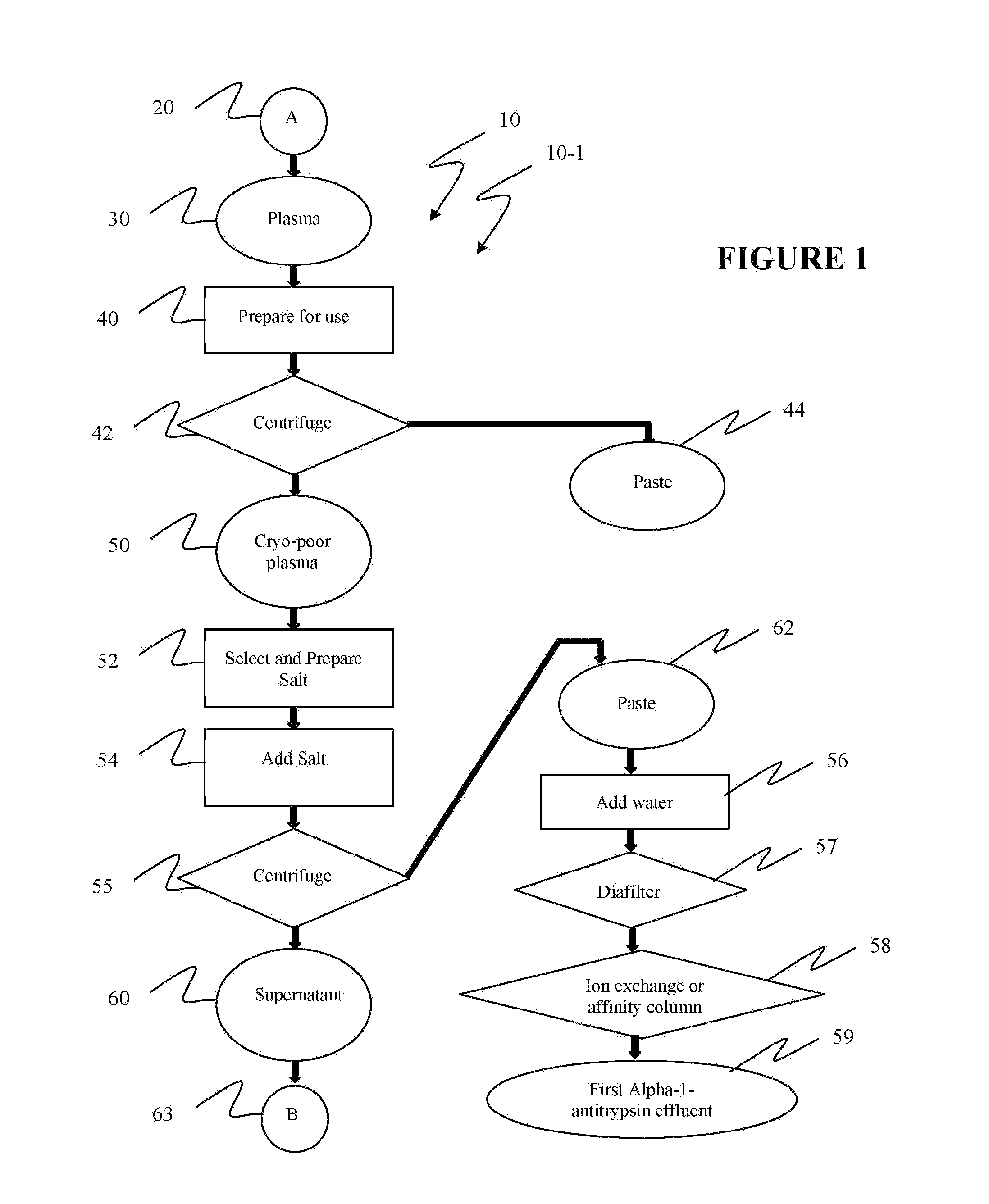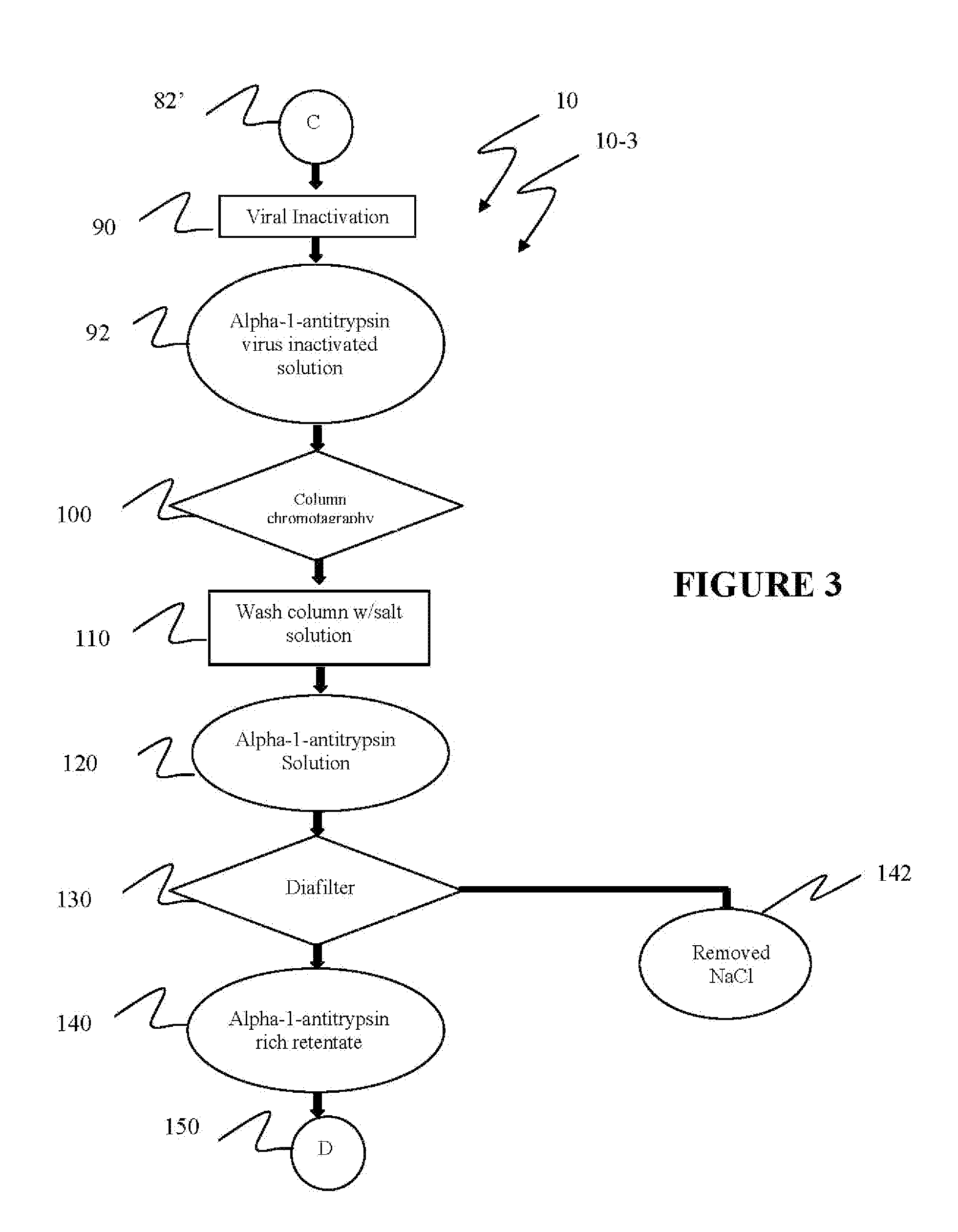Ultra-high Yield Of Alpha-1-Antitrypsin
a technology of alpha-1-antitrypsin and high yield, which is applied in the direction of antibody medical ingredients, peptides/protein ingredients, peptides, etc., can solve the problems of permanent denaturation, increase in temperature, and increase in denaturation danger, so as to reduce production costs, increase yield, and yield higher
- Summary
- Abstract
- Description
- Claims
- Application Information
AI Technical Summary
Benefits of technology
Problems solved by technology
Method used
Image
Examples
Embodiment Construction
Reference is now made to flow path elements illustrated in FIGS. 1-4. Generally, each rectangular box is used to illustrate a procedural step; each diamond is used to demonstrate a separation step; each oval designates a product resulting from a preceding procedural or separation step; and each circle is used to identify either a starting point or a continuation path.
Reference is now made to FIG. 1 wherein an initial portion 10-1 of a preferred alpha-1-antitrypsin process flow path, generally numbered 10, is seen. As indicated after initial starting point 20, a volume of plasma 30 to be processed is selected. In preparation step 40, plasma 30 is frozen and then warmed to approximately five degrees Centigrade to form a cryoprecipiate. While five degrees is the target process temperature, which should be maintained throughout the following steps in process 10, a temperature range between limits of two to eight degrees may be held within the scope of the instant invention. A separation...
PUM
| Property | Measurement | Unit |
|---|---|---|
| Fraction | aaaaa | aaaaa |
| Fraction | aaaaa | aaaaa |
| Fraction | aaaaa | aaaaa |
Abstract
Description
Claims
Application Information
 Login to View More
Login to View More - R&D
- Intellectual Property
- Life Sciences
- Materials
- Tech Scout
- Unparalleled Data Quality
- Higher Quality Content
- 60% Fewer Hallucinations
Browse by: Latest US Patents, China's latest patents, Technical Efficacy Thesaurus, Application Domain, Technology Topic, Popular Technical Reports.
© 2025 PatSnap. All rights reserved.Legal|Privacy policy|Modern Slavery Act Transparency Statement|Sitemap|About US| Contact US: help@patsnap.com



